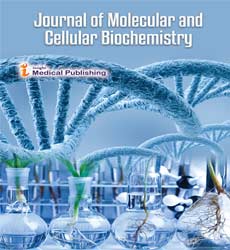Molecular Design of Isoniazid Analogues with Enhanced Therapeutic Potential as Antitubercular Agents: In Silico In Silico KNN-MFA, Pharmacophore and Virtual Screening
Abstract
Over four decades of time, Isoniazid has been a popular drug but its glory has faded away with time though it is too strong scaffold to render it be of no use. In the following research work different computational strategies have been applied on isoniazid derivatives to re-evaluate its efficiency as anti tubercular scaffold by putting versatile substituent over the basic drug moiety with consideration of the reported data. Each data has defined specific substitution pattern on the scaffold to achieve higher activity. The following experiment accounts for 2D-QSAR, 3D-QSAR, docking analysis, pharmacophore mapping and further precise designing of the data set with the promising active moiety and concludes its chemistry to define its suitability in future. 2DQSAR has shows good reliability with r2=0.8031, q2_LOO=0.6757 and external pred_r2=0.6202, along with 3D QSAR has good predictability, q2 (r2cv)=0.8611, pred_r2=0.7691. Also, ligand based pharmacophore mapping for estimating atomic contribution of the molecular arrangement indicates that hydrogen accepter, donor and aromatic ring parameters are important for designing aspect. Finally, new chemical entities are designed taking considerations of all results and their activity is predicted with known data set. The predicted activity of the designed compounds exposed the re-utilization of the scaffold to be anti-TB active.
Open Access Journals
- Aquaculture & Veterinary Science
- Chemistry & Chemical Sciences
- Clinical Sciences
- Engineering
- General Science
- Genetics & Molecular Biology
- Health Care & Nursing
- Immunology & Microbiology
- Materials Science
- Mathematics & Physics
- Medical Sciences
- Neurology & Psychiatry
- Oncology & Cancer Science
- Pharmaceutical Sciences
